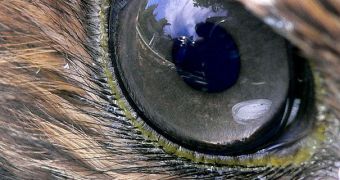One of the main goals towards which the electronics industry is currently working is breaking out of 2D construction patterns. Recently, a milestone was achieved when light sensors were placed on a curved surface to produce an eyeball-shaped camera.
Stretchable electronics could find a tremendous number of potential applications, such as for example in light sensors, transistors, diodes and the likes. Microprocessors could be fashioned on other substrates rather than rigid silicon wafers, experts say.
Create video cameras that look like eyes is also an important accomplishment, researchers say, as it demonstrates electronics are finally ready to leave the planar mold, and head into a 3D age.
But the team who led the development of the new camera says that, in addition to proving the concept feasible, they also managed to produce a device capable of a 3.5x zoom. This is done by changing the shape of the lens and its sensors at the same time.
This restores the original camera concept to its full glory, except in a new, improved, more usable form. “The result is a complete camera system, with tunable lens and tunable detector, capable of taking pictures,” explains expert John Rogers.
He was the leader of the group that developed the device. The scientist holds an appointment as a professor of materials science and engineering at the University of Illinois in Urbana-Champaign (UIUC), Technology Review reports.
The researchers published the full details about their innovative camera in the January 17 issue of the esteemed journal Proceedings of the National Academy of Sciences (PNAS).
By putting together the eye-shaped camera, the team was able to create a device that is more compact, simpler to build, and also that features a wider field of view. The curved sensors on the instrument are very similar to the retina at the back of the eye, which is also curved.
According to Northwestern University professor of engineering and study coauthor Yonggang Huang, the new cameras could be used for entertainment, surveillance, medical imaging, or they could be mounted on tablet computer, laptops and mobile phones.
The device represents “a fantastic demonstration of the technology toolbox that John Rogers and Yonggang Huang have pioneered over the years,” says University of Minnesota professor of electrical and computer engineering Heiko Jacobs.
The scientists managed to “integrate high-performance devices on stretchable and curved substrates while maintaining electrical activity,” the expert goes on to say.
“It will dramatically change the appearance of devices and systems which can take new forms and shapes that a few years ago would have been impossible to build,” Jacobs concludes.

 14 DAY TRIAL //
14 DAY TRIAL //